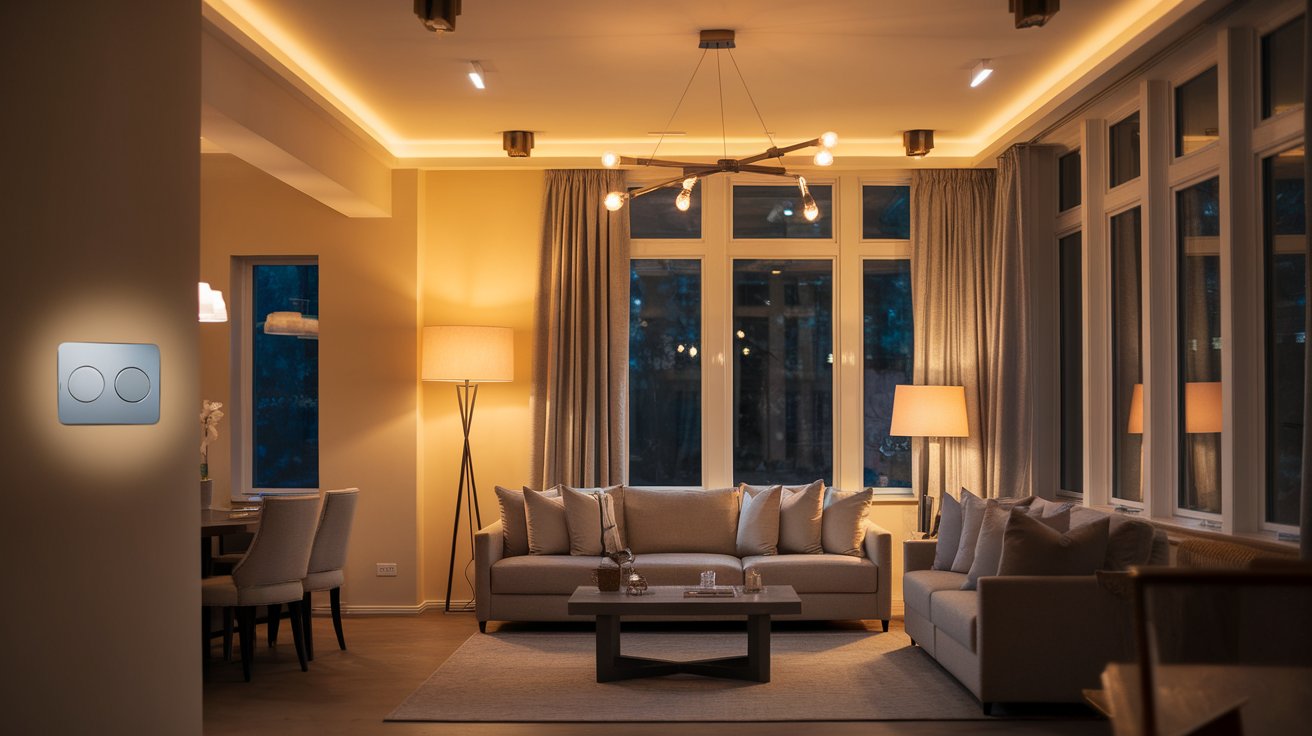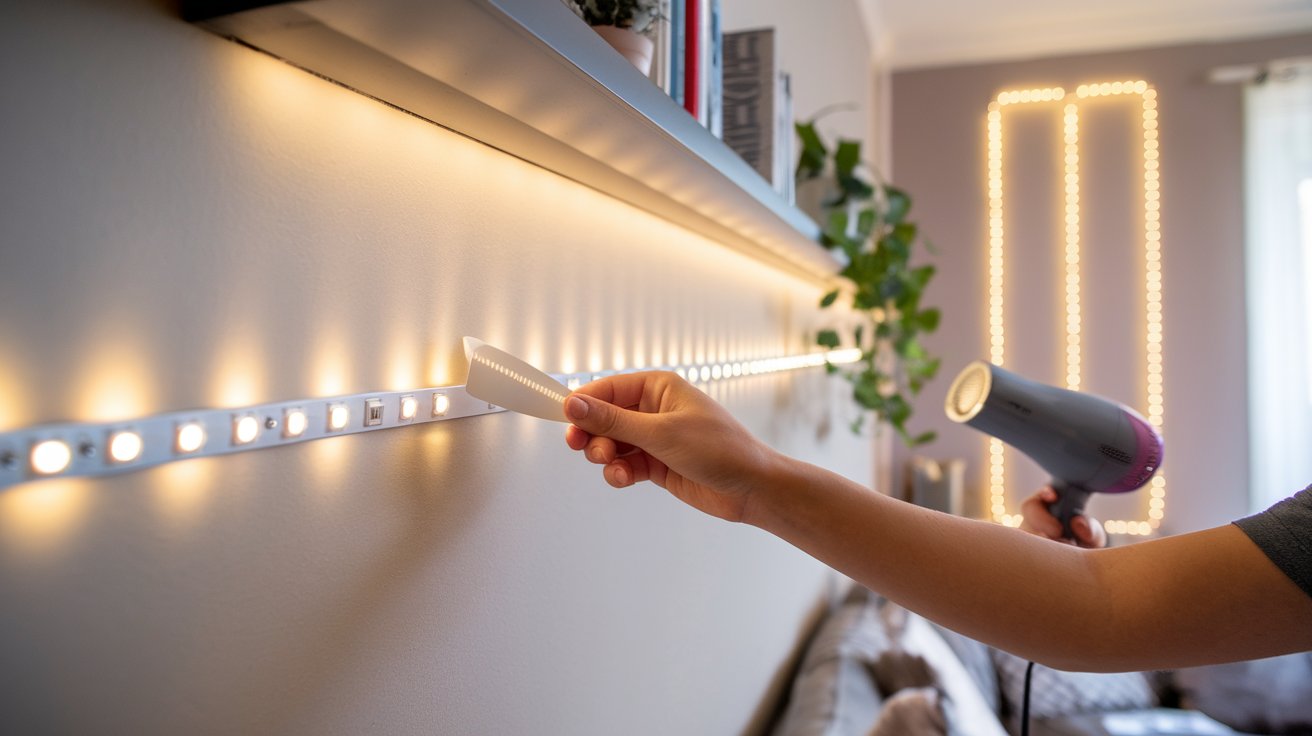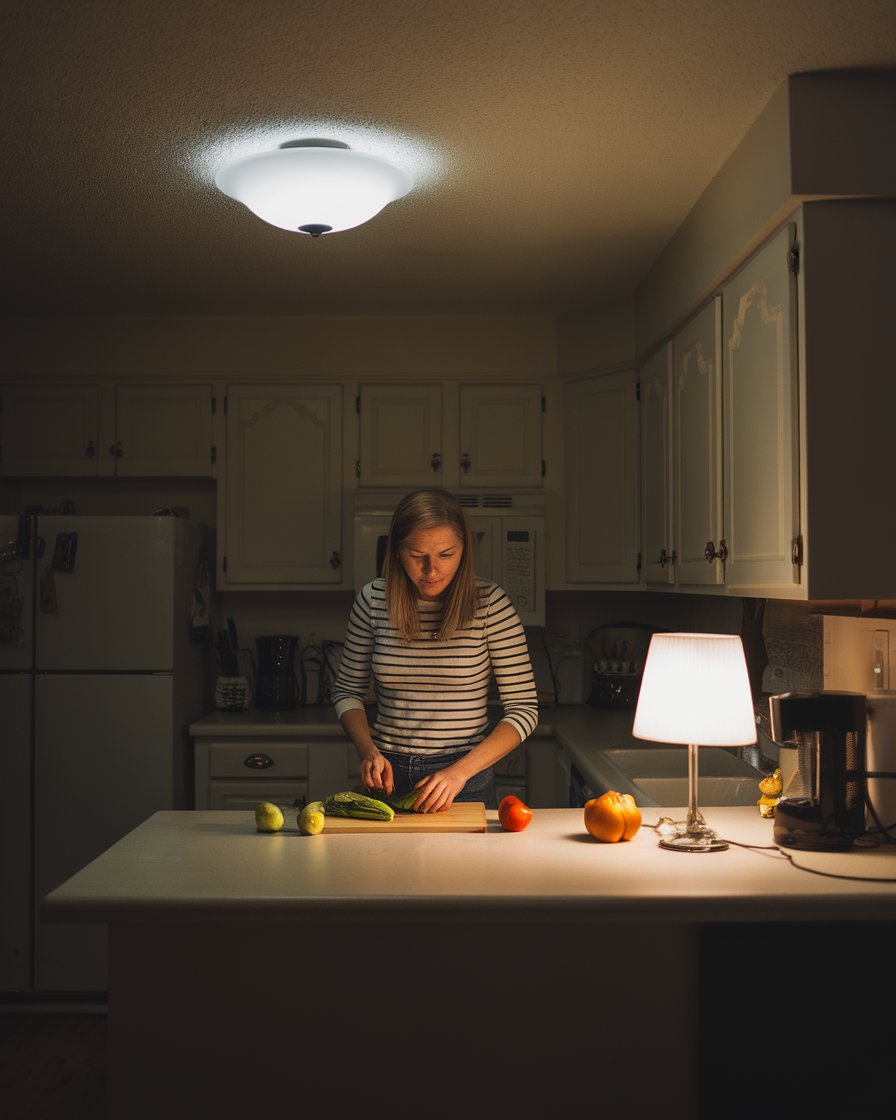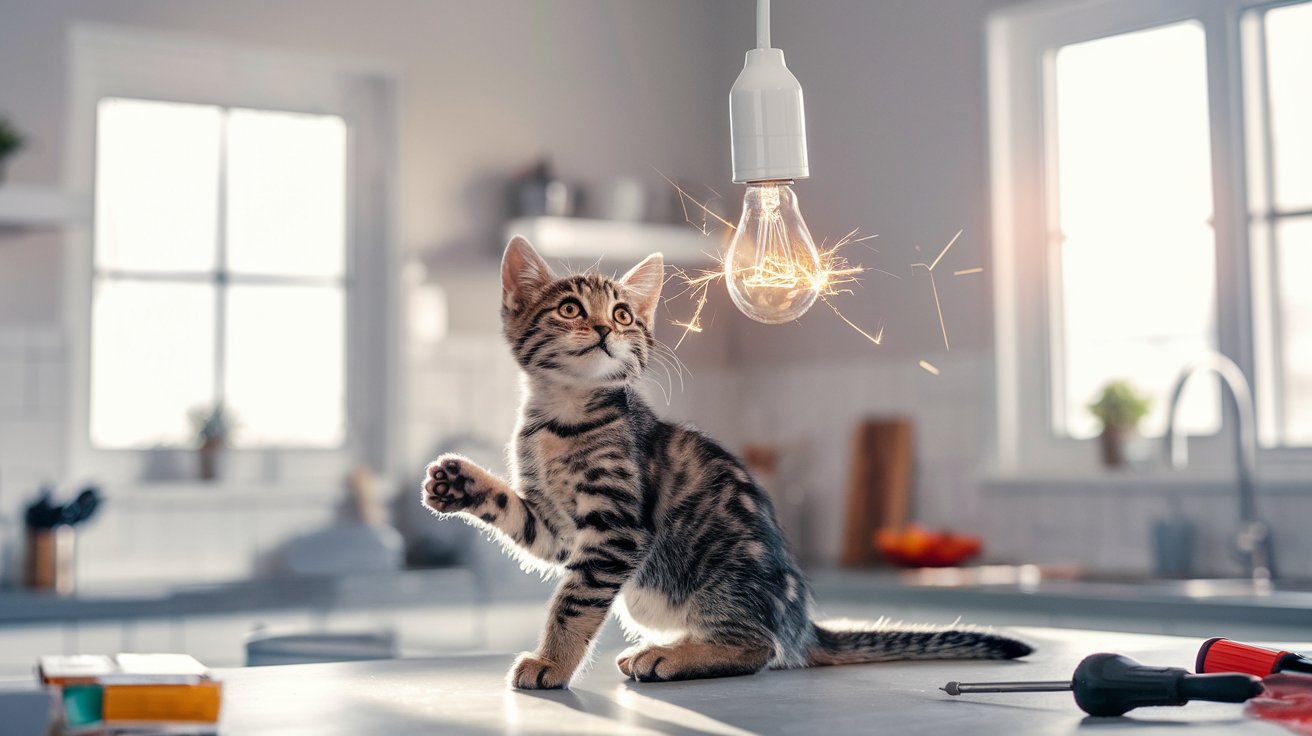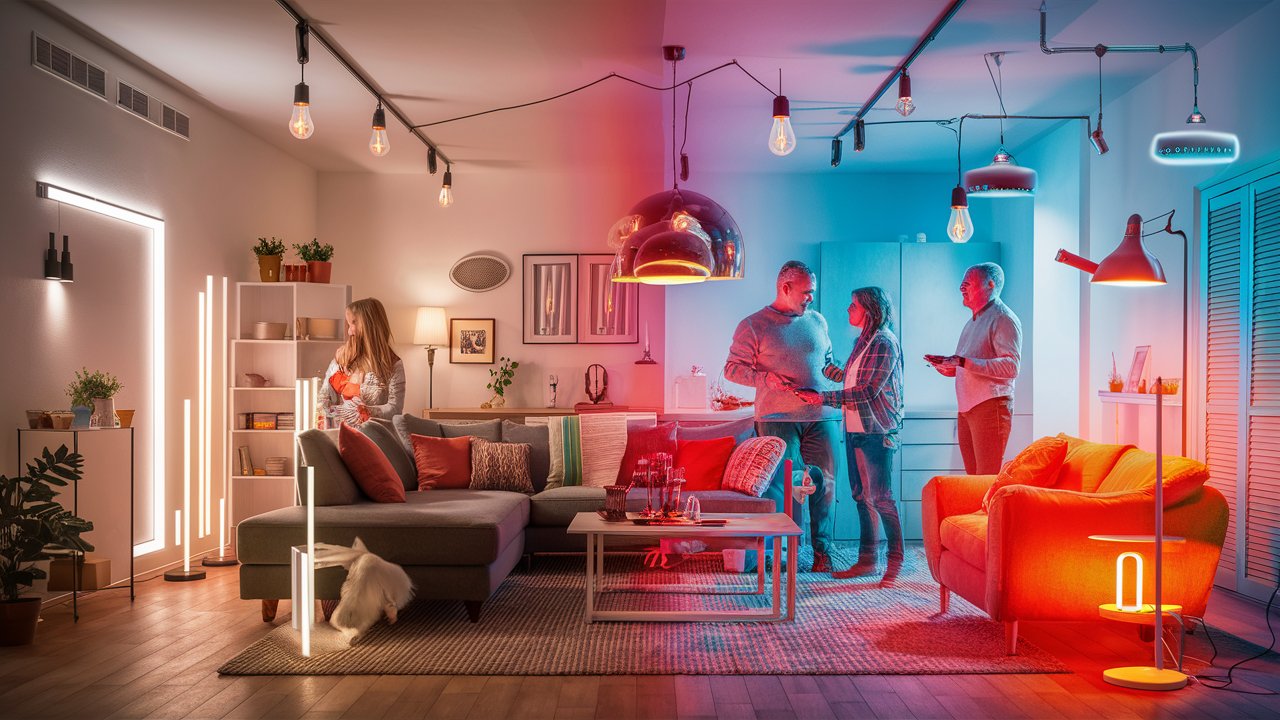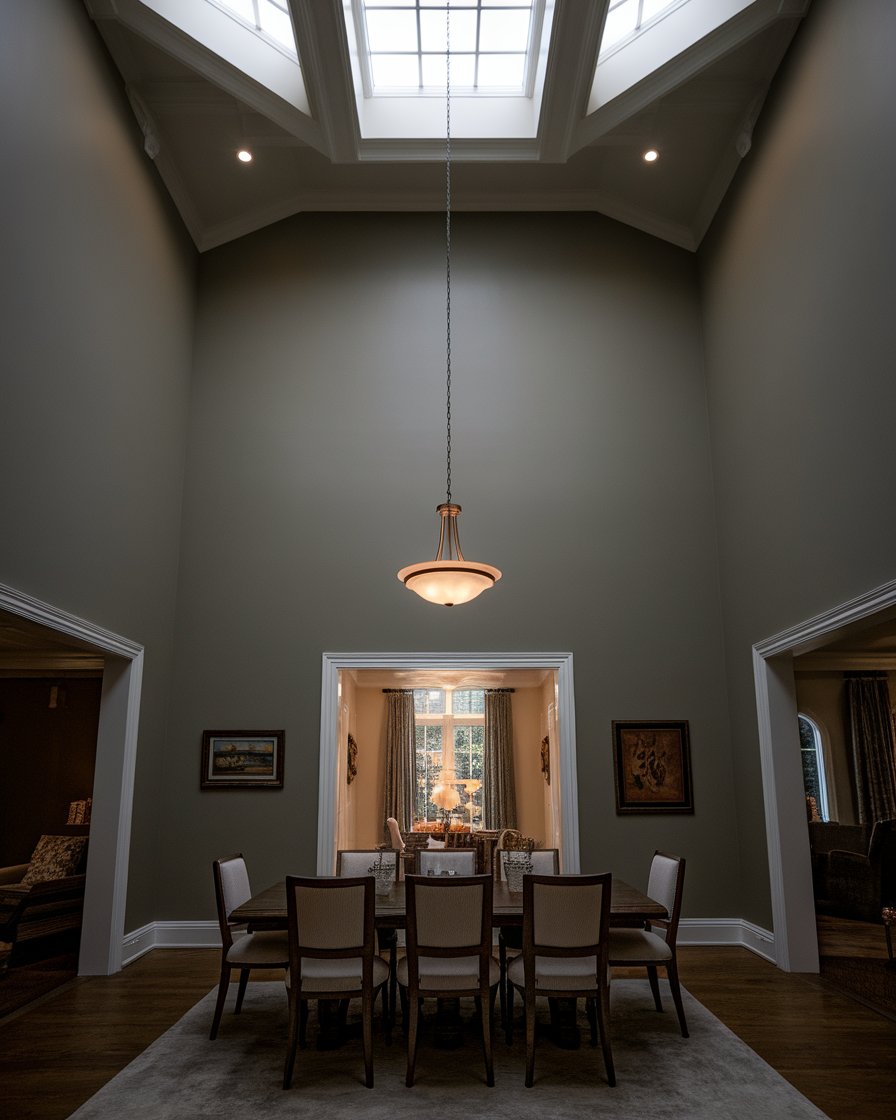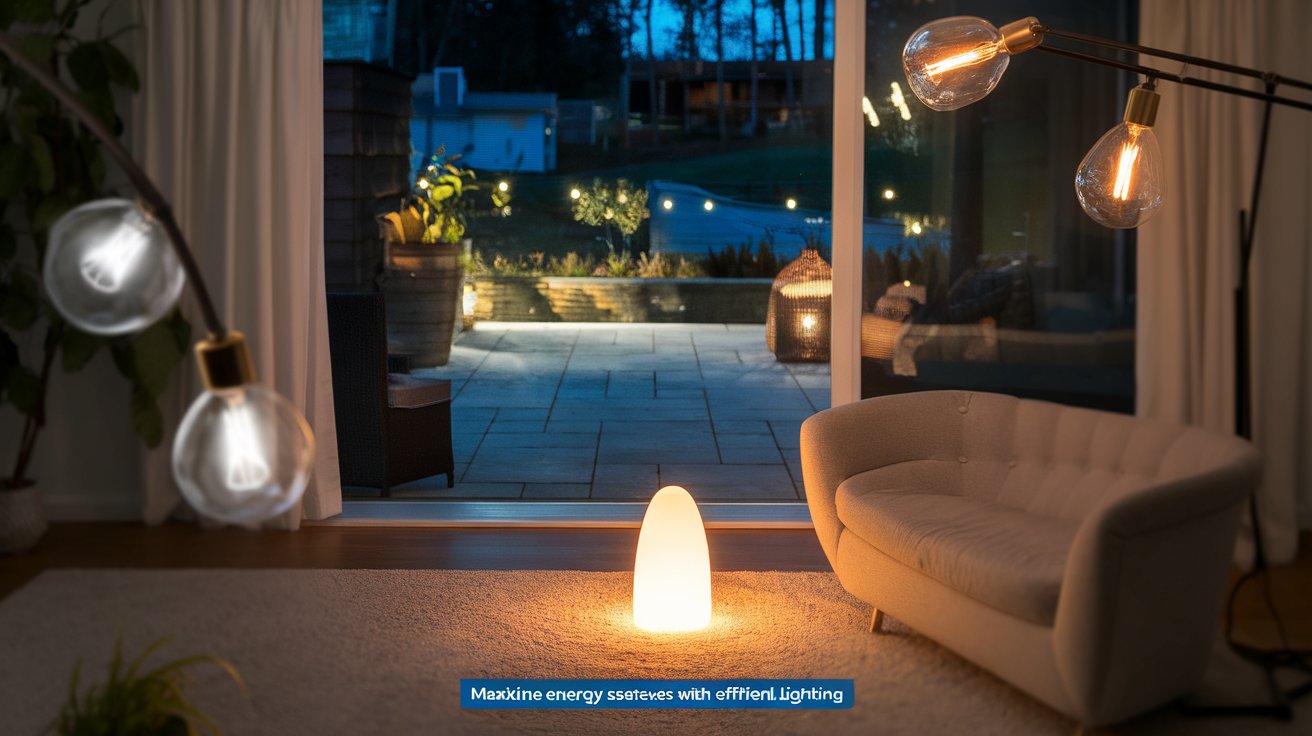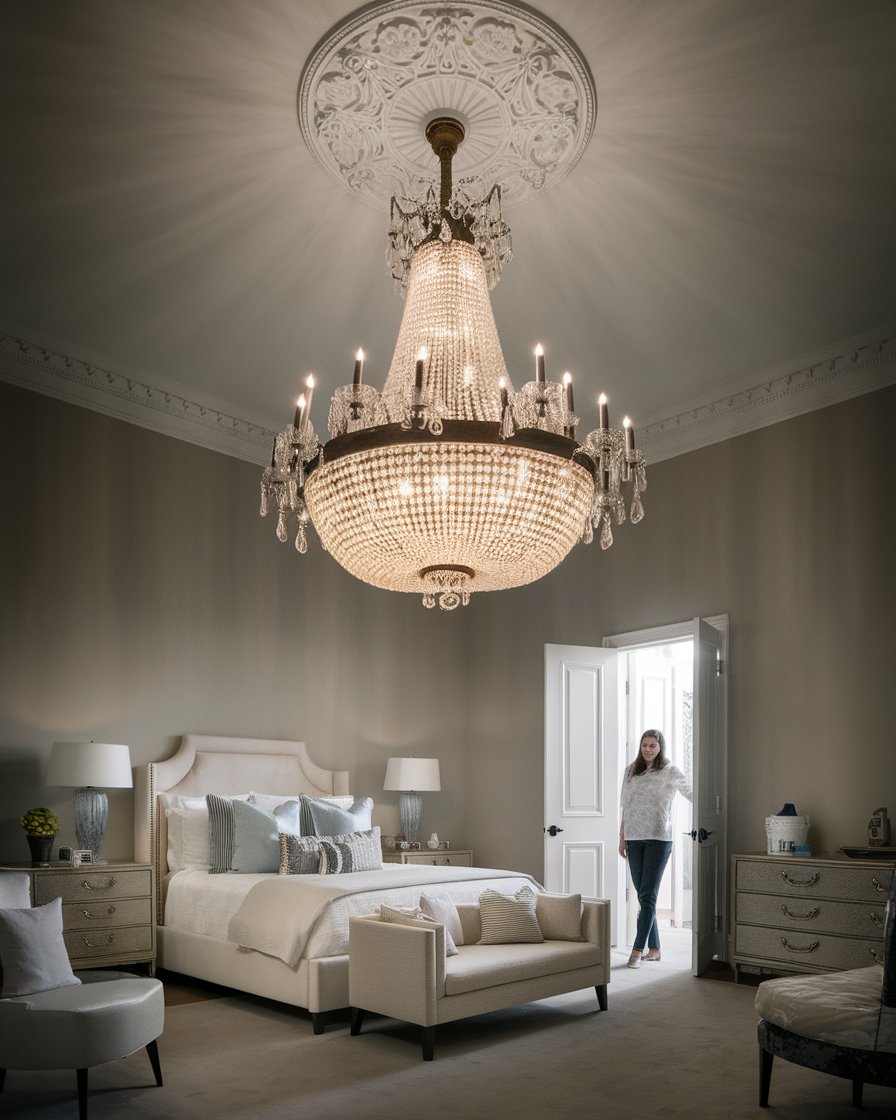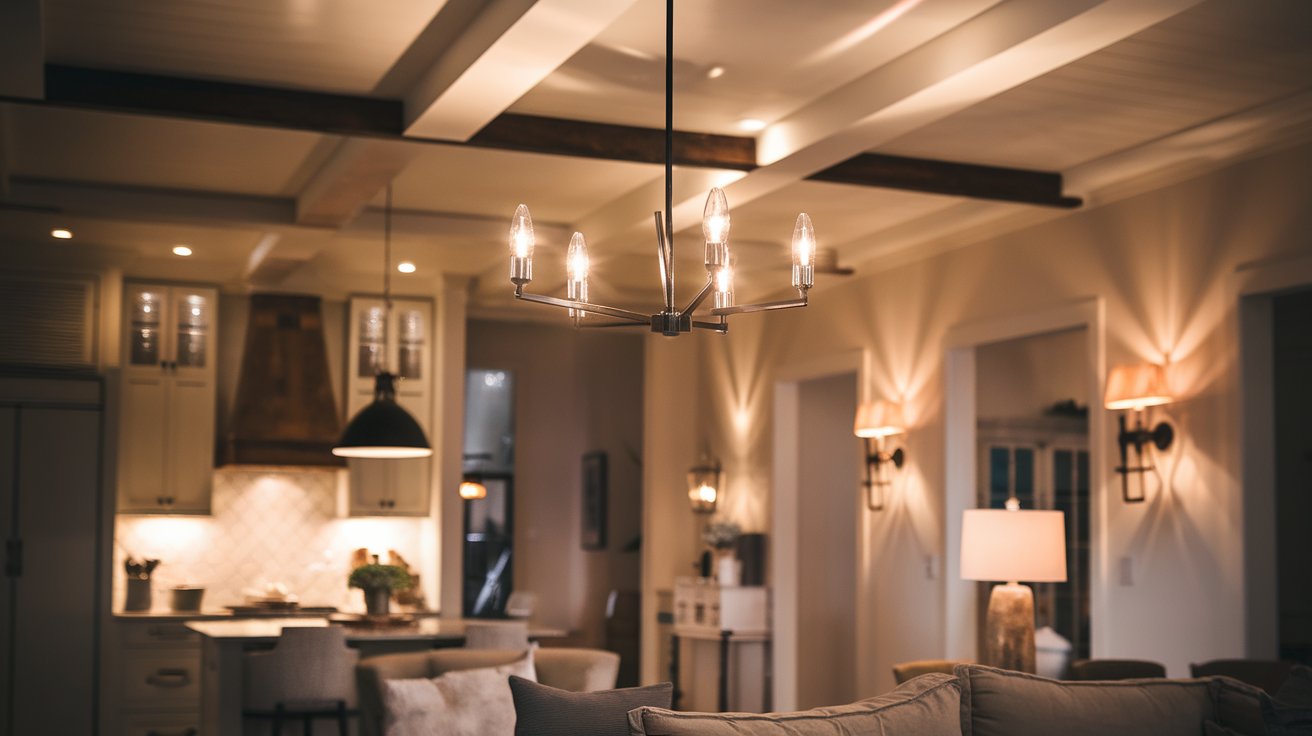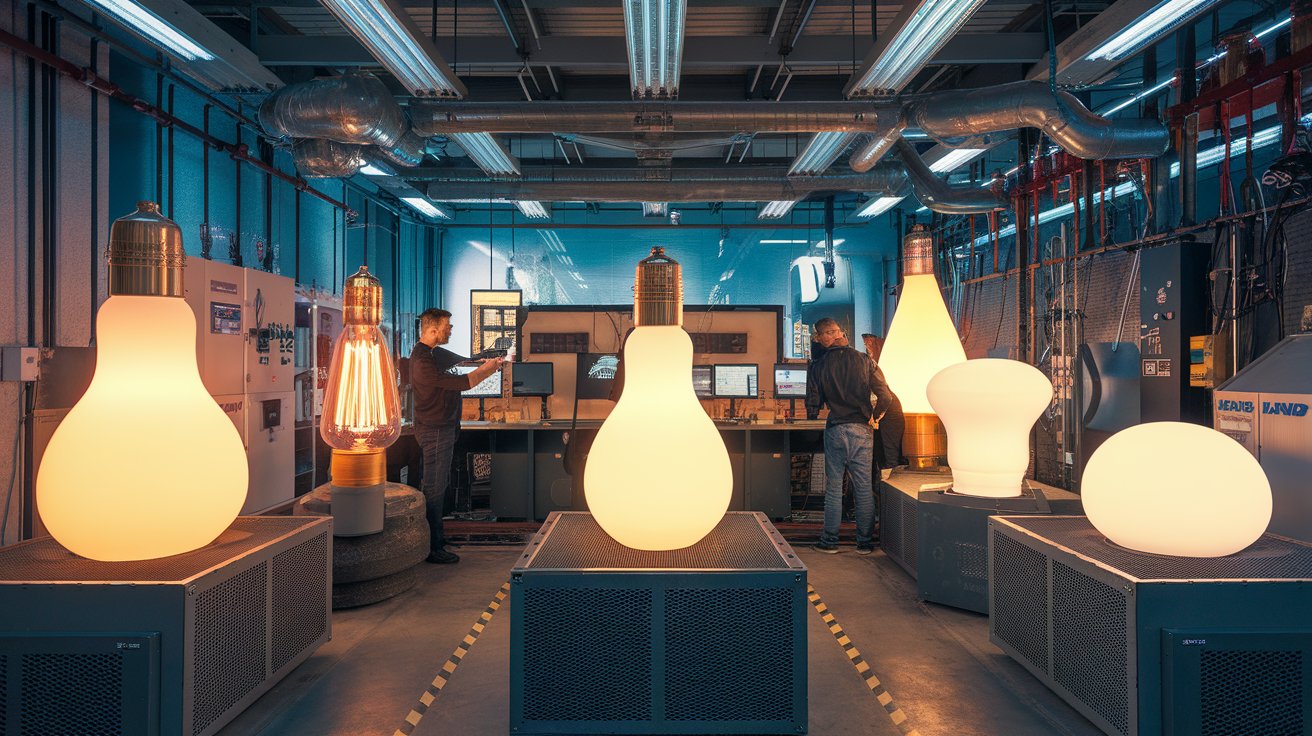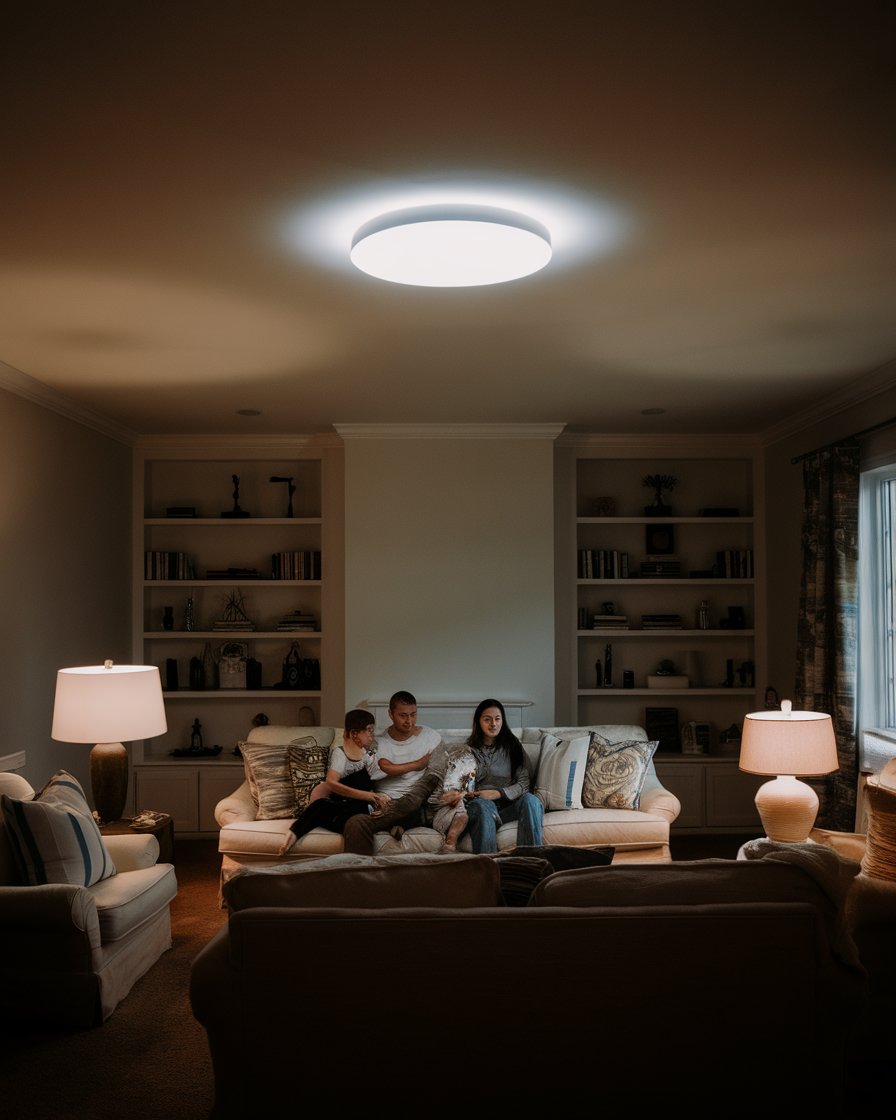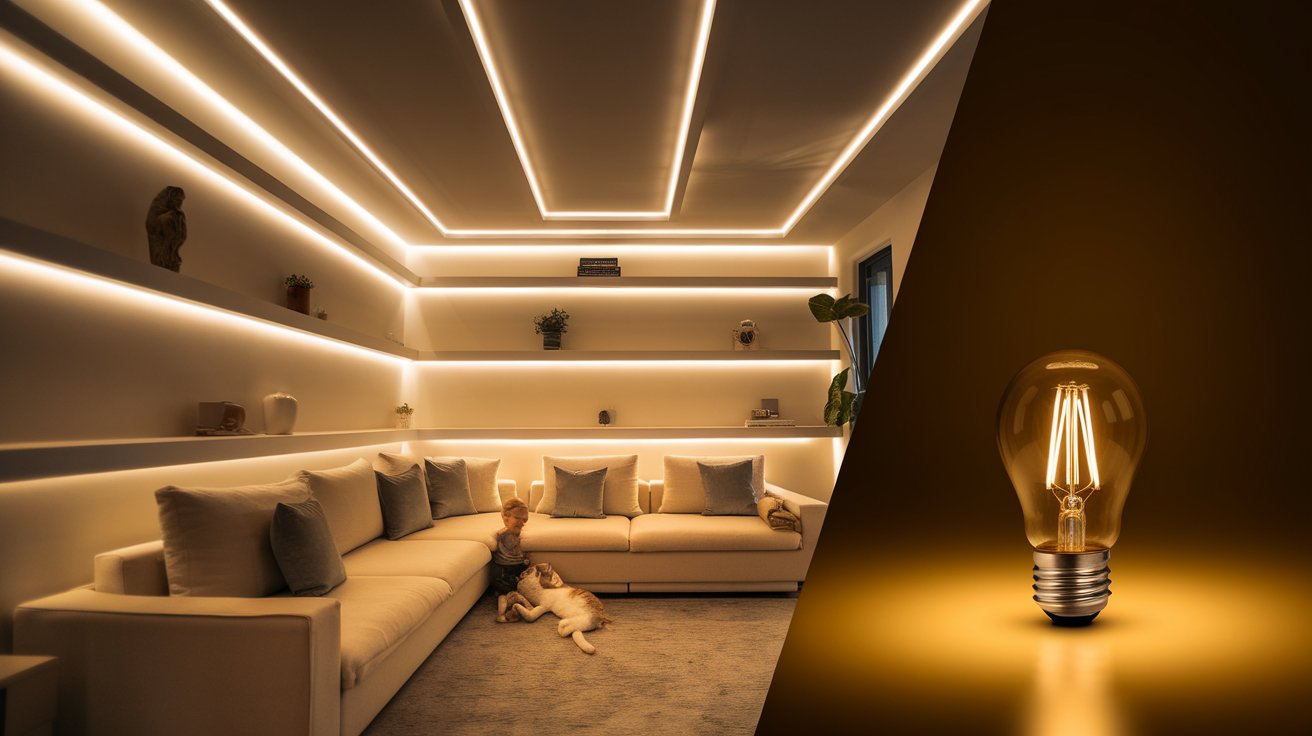Introduction
Lighting is one of the most important elements in home design, yet many homeowners overlook its impact by relying on outdated practices or improper fixtures. From the common mistake of using only one overhead light to choosing the wrong size fixtures, these errors can drastically affect the ambiance and functionality of any space. Understanding how lighting design affects both the aesthetics and comfort of a room is key to creating a warm, welcoming environment.
By addressing issues such as over-reliance on a single light source or selecting fixtures that don’t fit the room size, homeowners can greatly improve their lighting layout. Incorporating ambient, task, and accent lighting can transform rooms into well-lit, balanced spaces, enhancing both practical use and visual appeal.
Key Takeaways
- Relying on a single light source can lead to poor visibility and an uncomfortable atmosphere.
- Properly sized lighting fixtures are essential to maintaining both practicality and aesthetic balance in a room.
- Multiple light sources, such as ambient, task, and accent lighting, provide a well-lit, inviting space.
- Fixtures that are too large or too small can disrupt the harmony and functionality of the room.
- Using dimmers and energy-efficient bulbs can improve both lighting control and energy efficiency.
- A well-planned lighting layout enhances the overall living experience and supports various activities.
Common Over-reliance on a Single Light Source
Homeowners often face the challenge of relying on one light bulb or fixture for their rooms, which affects the overall ambiance and visibility. This can lead to dull spaces, shadows, and even eye strain. To properly illuminate the space, it’s important to consider multiple lighting options, such as pendant lights, chandeliers, and under-cabinet lighting, to provide balanced illumination. By adding a dimmer switch and optimizing natural light, homeowners can create a more welcoming and functional environment. A well-designed lighting plan that incorporates wall lights and under-cabinet lights can address these issues, preventing common mistakes homeowners make. One fixture simply cannot meet the diverse lighting needs of a room, so having a strategic lighting plan will ensure every area, including spaces like the pantry and closet, are well-lit.
Risks of Relying on One Light Fixture
Homeowners often make the mistake of relying on a single light source for their rooms. This approach generates a dull ambiance, causing harsh shadows and poor visibility. Such lighting can lead to eye strain and increase accident risks due to inadequate illumination, creating an uncomfortable living habitat. It’s critical to recognize that one light fixture cannot effectively cater to all areas of a room. Integrating additional light sources like ambient, task, and accent lighting can improve both safety and comfort.
How to Incorporate Multiple Light Sources
To prevent issues related to poor lighting, homeowners should consider integrating multiple light sources. By layering ambient, task, and accent lighting, they can create a well-lit and inviting atmosphere. Using different fixtures in combination allows for better control over light quality and distribution, transforming any room into a functional, warm, and appealing space. Additionally, adjusting color temperature and installing dimmers can give greater flexibility in managing light levels for different activities.
H3 List Header for First H2
1. Layer Lighting for Better Visibility
Layering different types of lighting—ambient, task, and accent—ensures better overall visibility and comfort in your space. This combination provides both functional and aesthetic benefits, making the room more inviting.
2. Consider Color Temperature
Choosing the right color temperature for your lighting fixtures can drastically change the room’s atmosphere. Warmer temperatures offer a cozy feel, while cooler tones are great for task-oriented spaces like kitchens and offices.
3. Use Dimmers to Control Ambiance
Dimmers give homeowners the flexibility to adjust lighting levels according to different needs and times of the day, allowing for a comfortable ambiance while also saving energy.
Mistake on Using Lighting Fixtures that Do Not Fit the Room Size
Choosing the wrong size for light fixtures is one of the most common home lighting mistakes. A small fixture might fail to properly light a large space, while an oversized fixture can dominate the focal point of the room, overwhelming other design elements. This imbalance disrupts the comfort and flow of a room. Homeowners should consider the room’s proportions, layout, and even the use of a ceiling fan to maintain harmony. It’s essential to create a lighting scheme that blends well with the overall design and doesn’t overpower the room’s furnishings, ensuring a seamless and balanced appearance.
Effects of Improperly Sized Fixtures
When homeowners opt for lighting fixtures that do not fit the size of the room, they can significantly disrupt the harmony of the space. A fixture that is too small fails to provide adequate illumination, while an oversized fixture can dominate the room, drawing attention away from other design elements. This imbalance can create a chaotic aesthetic, ultimately detracting from the overall comfort of the space. Properly sized fixtures are critical to boost both practicality and visual appeal.
Tips for Selecting the Right Size Fixtures
To ensure lighting fixtures complement the room, homeowners should consider the proportions of the space and the furniture within it. Choosing larger or multiple fixtures for broad areas ensures adequate exposure, whereas sleek, minimalistic options like recessed lighting are ideal for smaller rooms, promoting a seamless look without overwhelming the habitat. Consideration of wattage and the use of energy-efficient bulbs can further improve lighting performance.
Case Study: Impact of Layered Lighting in Home Design
A recent renovation project in a New York City apartment highlighted the importance of layered lighting in modern home design. The homeowners initially relied on a single overhead light fixture in their living room, which left the space feeling dim and uninviting. After consulting with lighting experts, they opted to incorporate a combination of ambient, task, and accent lighting.
The result was a dramatic improvement in both the functionality and aesthetic of the room. The ambient lighting provided general illumination, while task lights enhanced specific areas for reading and working. Accent lights highlighted artwork and architectural features, creating a balanced and welcoming atmosphere. This layered approach not only improved the visual appeal of the space but also made it more practical for everyday use.
Choosing The Wrong Size of a Light Fixture
A mismatched light fixture size can negatively impact both the aesthetics and practicality of the space. Fixtures that are too small might not provide sufficient light, while those that are too large may dominate the center of the room, causing distraction. Homeowners should focus on proportionality between the lighting fixture and the room dimensions. By considering the overall lighting layout for your home, it becomes easier to avoid these mistakes and how to avoid them. A well-proportioned fixture enhances both the ambiance and function of every room, ensuring a visually pleasing and properly lit environment.
Impact of Incorrectly Sized Fixtures
When homeowners opt for lighting fixtures that do not fit the size of the room, they can significantly disrupt the harmony of the space. A fixture that is too small fails to provide adequate illumination, while an oversized fixture can dominate the room, drawing attention away from other design elements. This imbalance can create a chaotic aesthetic, ultimately detracting from the overall comfort of the space. Properly sized fixtures are critical to boost both practicality and visual appeal.
Tips for Properly Sizing Light Fixtures
To ensure lighting fixtures complement the room, homeowners should consider the proportions of the space and the furniture within it. Choosing larger or multiple fixtures for broad areas ensures adequate exposure, whereas sleek, minimalistic options like recessed lighting are ideal for smaller rooms, promoting a seamless look without overwhelming the habitat. Consideration of wattage and the use of energy-efficient bulbs can further improve lighting performance.
“Lighting is not just about illuminating a space; it’s about creating an experience. The right lighting can transform a room and evoke emotions.” — David Trubridge, renowned lighting designer.
Installing Only One Source of Light
Depending on a single light source creates uneven lighting, which can cause eye strain and discomfort. Certain areas may become too bright, while others remain dim, making the space feel less inviting. A list of common mistakes homeowners make includes relying solely on overhead lights. To avoid these mistakes to avoid, it’s essential to incorporate three types of lighting—ambient, task, and accent—to provide balanced illumination. Adding features like recessed light fixtures or dimmable options can significantly improve the lighting quality and adjust the mood across every room of the home.
Drawbacks of Single Light Sources
Relying solely on one light source can lead to uneven lighting, leaving some areas inadequately illuminated while others become overly bright. This imbalance strains the eyes as they adjust to various levels of brightness, particularly in workspaces such as kitchens or offices. When a single fixture is used, it often fails to cater to the room’s effectiveness, resulting in a less inviting atmosphere and diminished productivity.
Ways to Incorporate Multiple Light Fixtures
To improve lighting effectiveness, homeowners should consider adding multiple sources like ceiling lights, floor lamps, and wall sconces. This combination can create layers of light, making every corner of the space well-lit and visually appealing. Additionally, using dimmers on these fixtures allows for adjusting brightness according to mood and occasion, ensuring a comfortable ambiance for various activities.
Conclusion
In conclusion, proper lighting plays a critical role in both the functionality and aesthetic appeal of a home. Many homeowners fall into common lighting mistakes such as relying on a single light source or selecting fixtures that are too large or too small for the space. These issues can lead to discomfort, poor visibility, and an unbalanced atmosphere that impacts daily activities.
To create the perfect lighting layout, it’s essential to consider the room’s proportions, the type of lighting needed, and the overall design. By incorporating multiple light sources, using energy-efficient bulbs, and adjusting light levels with dimmers, homeowners can avoid these mistakes and create a comfortable, well-lit living environment.

